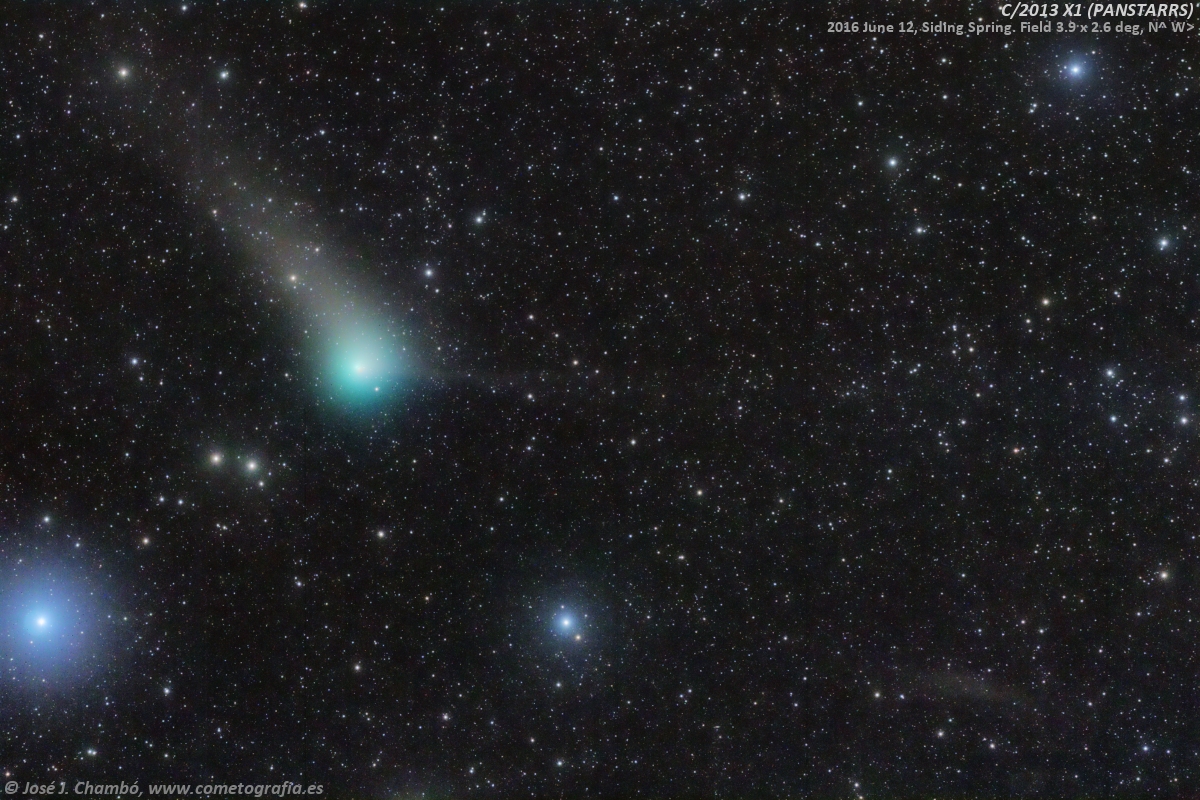Observation by Jose Chambo: Object/Date: Comet C/2013 X1 (PANSTARRS...
Uploaded by
Observer
Jose Chambo
Observed
2016 Jun 12 - 00:00
Uploaded
2016 Jun 16 - 06:36
Objects
Planetarium overlay
Constellation
Piscis Austrinus
Field centre
RA: 21h36m
Dec: -32°19'
Position angle: +0°00'
Field size
3°53' × 2°35'
Full filename
2013x1/2013x1_20160612_jchambo.jpg
Target name
C/2013 X1 PANSTARRS
Title
Object/Date: Comet C/2013 X1 (PANSTARRS) @ June 12,2016 Description: Comet C/2013 X1 (PANSTARRS) imaged on June 12 2016, only 10 days before its maximum approach to Earth with a brightness near magnitude 6.5 is observable through binoculars. In this wide field image highlights a greenish coma with an appearent diameter as big as the Moon, from its departs toward upper left a dust trail (type III) with more than a degree long, also can be viewed a long and narrow ionic tail very faint towards right. As novelty aso can be observed the begin of its classical dust tail (type II) projected only a few arcminutes towards upper right. The brishtest star of the field is Iota Piscis Austrini with magnitude 4, and also can be perceived near the down right corner a small and faint interstellar cloud associated to infrared emission source IRAS F21276-3327. Tech data: Takahashi FSQ ED 106mm. f/5.0 & SBIG STL-11000M (L:3×180s bin1 + RGB:1x60s Bin2) remotely from Siding Spring, NSW (Australia)


